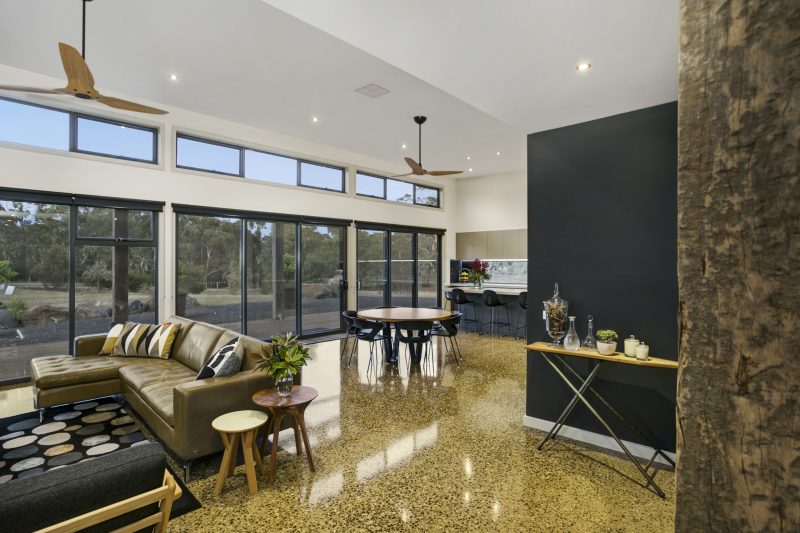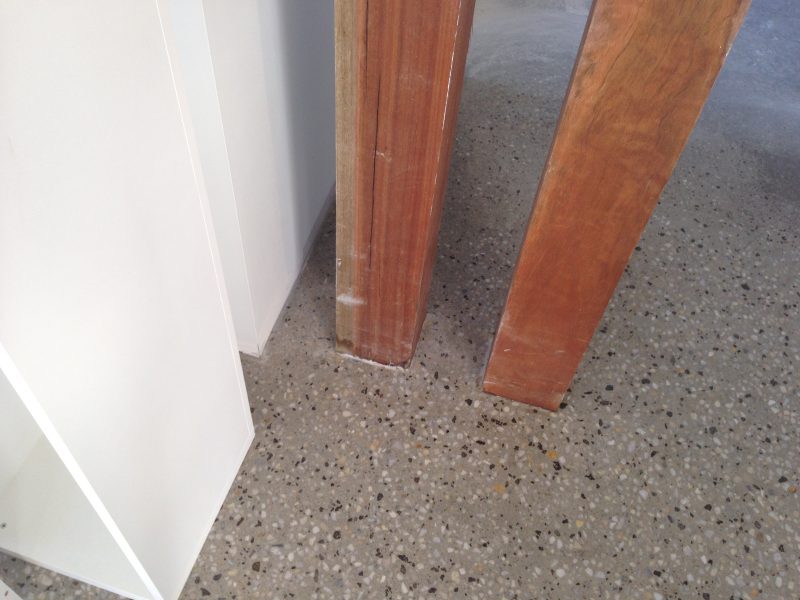For some, a new house with blank walls and no flooring could sound like a…

Concrete Floor Solutions for your Home
If you are looking for a versatile flooring solution that is timeless, sustainable, and… well in fact, ticks all the boxes, then you need to know more about concrete floors for your home.
The benefits of polished concrete flooring can include, but are not limited to the following:
- Economical – Save costs on additional floor coverings as the concrete slab is used as the primary floor surface.
- Longevity – The durability of concrete floors surpass the more vulnerable floor covering solutions (tiles, carpet, hardwood) during the life cycle of your home.
- Care – Maintenance is made easy and it won’t retain dirt and dust that contribute to unhealthy allergens.
- Sustainability – Environmentally friendly and energy efficient, concrete flooring is excellent at retaining and releasing heat.
3 Popular Finishes include:
- Polished Concrete (Polyurethane coating)
- Burnished Concrete
- Retro plate
Polished Concrete – Polyurethane coating
Polished concrete is one of the more popular finishes where either a partial or full grind is undertaken to reveal the aggregate within the poured concrete slab. It is very important that you use an experienced contractor to pour the slab. A number of finishes and effects can be created by the colours of the aggregate used. The overall look can be changed by how deep the concrete slab is ground down. Normally for a full exposure, 3-5mm is cut away revealing lots of stone and colour. For a salt and pepper finish only a very light grind is undertaken to reveal little or no aggregate.
Mid construction the concrete is cleaned, grouted, buffed and then 2 coats of a polyurethane coating is applied. Nearing completion the concrete is buffed and a third coating of polyurethane is applied giving a luscious sheen which is both durable and easily maintained.
Burnished Concrete
Burnished concrete is where the concrete floor is very lightly cut and polished rather than ground to reveal natural concrete. It is achieved by cleaning and then sealing a well finished slab. Burnished concrete does not have the same durability of polished concrete and it is very important that the initial slab be poured by an experienced tradesman as any blemishes including dips, footprints or marks can have a big impact on the end result. Grinding is not a procedure of this finish and therefore accidental marks cannot be removed.
The process involves a mechanical powered trowel creating a finish suitable to allow for burnishing. If it is uneven the end result will be uneven. There will be no hiding that fact! It is the role of the concreter to achieve an even finish along with a level of sheen.
During the building process it is important to be mindful of the slab if it is going to have a burnished finish to avoid any marking and staining. Spilt liquids, wet timber or sawdust, rusting nails left on the concrete surface prior to sealing can have a negative impact on the final appearance of the floor.
The end result of burnishing is a hard-wearing, durable finish with a lustre to its surface.
RetroPlate
The third popular type of polished concrete is when the slab is RetroPlate finished. This is one of the more expensive finishes to achieve but is also one of the most durable and maintenance free options on the market.
The first step is to grind the floor back to show the level of aggregate you want. The grinding removes any surface imperfections that currently exist in the slab.
Secondly, the RetroPlate product is used to densify the floor as it penetrates the concrete hardening and sealing the concrete with a chemical reaction.
The final step uses finer diamond grits to polish the floor producing a sheen finish. A matt through to a high gloss finish can be obtained without the need for sealants such as the polyurethane coating.
Concrete floors provide a seamless and authentic look to any home and style. Ensure you use a quality concreting professionals for a floor finish that will look great and last a lifetime.









what is the cost comparison in a new build – concrete vs tiling?
In comparison to ceramic tiles vs polished concrete, the tiles would be a slightly less expensive selection. However when you put porcelain or natural stone tiles in the mix and the labour expenses associated with laying large format tiles, polished concrete may be the cost effective option. To determine a true cost, you would need to know which tile product you are comparing to.